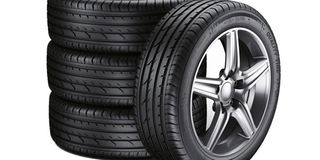Prime
Ask the Mechanic: What is the minimum tyre tread depth?

Hello Paul, I have read somewhere that tyres should be changed at 3mm. However others recommend changing tyres at 1.6mm. However tyres are not fully recyclable so, why should they not be used for as long as possible?
Tony
Hello Tony, for the safety of motorists, it is generally recommended that tyre tread depth should not be lower than 3.0mm (new tyre tread depth is usually 8.0mm). However, should your car tyre treads wear down to 1.6mm depth, you should not drive the car at all. In the United Kingdom, it is illegal to drive on tyres that are 1.6mm tread depth or below due to safety concerns. To put this in perspective, one needs to appreciate that tyre tread patches are the only contact between your car and the ground.
The tyre treads provide grip to the road surface. Therefore, the deeper the treads, the better the grip. That is why it is not a good idea to keep driving on worn out tyres as long as possible.
If the tyre treads wear down below 16mm, the vehicle may lose traction and experience longer braking distances or skidding on wet slippery conditions. Shallow tread grooves on worn out tyres will not evacuate water efficiently and can cause loss of traction and control or aqua planning, when driving over wet or flooded roads.
Many modern tyres today are designed with tread depth indicators in the form of bars constructed in the straight grooves between the tyre treads. When the treads wear to the level of the tread depth indicator bar, the tyres should be condemned and replaced.

Tyres
WHAT IS THE BEST POSITION FOR HOLDING THE STEERING WHEEL WHEN DRIVING?
Hello Paul, there are so many different bits of advice on the correct sitting position for a driver and where to hold the steering wheel. Is there a right answer?
BSK
Hello BSK, it is recommended that you adopt a sitting position where your back is and against the seat. Your seat should also be adjusted to allow your legs easily reach all foot pedals. Your hands should rest over the outer ring of the steering at the clock positions of 10 to 2 O’clock or 15 minutes to three O’clock, depending on where you feel comfortable based on your height and size.
There are no strict rules in the Highway Code or traffic act guiding motorists on how to sit in the car or how to hold the steering.
However, the above are the general accepted best practice or guidelines for adopting a good seating position and where to position your hands on the steering wheel.
Adherence to this guidance will be influenced by how comfortable you are as a motorist and ease of controlling the vehicle without challenges such as visibility, manoeuverability or handling.

Run Flat Tyres
WHAT ARE RUN FLAT TYRES AND HOW CAN I USE THEM?
Hello Paul, what are run flat tyres and how far can I drive on them?
Aidan
Hello Aidan, run flat tyres are specially designed by many leading tyre manufacturers to enable motorists continue driving safely after a puncture or pressure loss until they can get to a tyre shop or safe place to change or fix the tyre. Run flat tyres can only be driven for a limited distance and speed. There are two common types of run flat tyre systems; the self-supporting system and support ring system. In the self-supporting run flat tyre system, the side wall construction is reinforced to support the weight of the vehicle in the event of sudden deflation or air loss.
This run flat tyre design allows continued driving after air loss at the speed and for the distance recommended by the tyre manufacturer. The support ring run flat tyre system uses a ring or band of hard rubber constructed around the rim and is designed to carry the weight of the vehicle after the tyre(s) are deflated. This concept is commonly used in special vehicles such as the armoured conversions.
Most run flat tyre systems allow the motorists to cover distances as far as 80 kilometres at speeds not exceeding 80 KPH during deflation or air loss. Attempts to drive further or faster can cause severe damage or vehicle handling and control challenges.
Send an email them to: [email protected]




